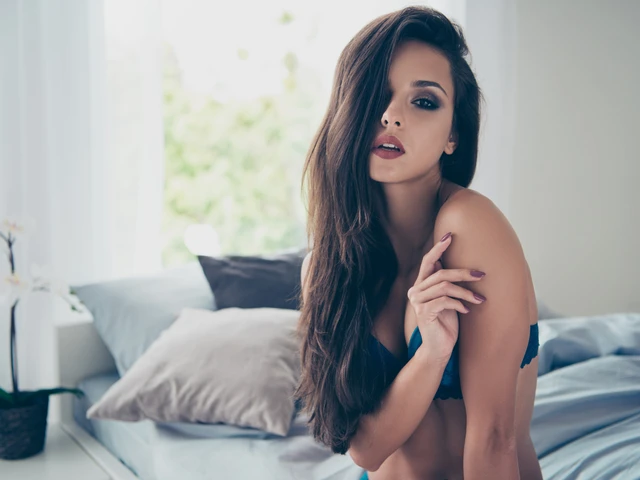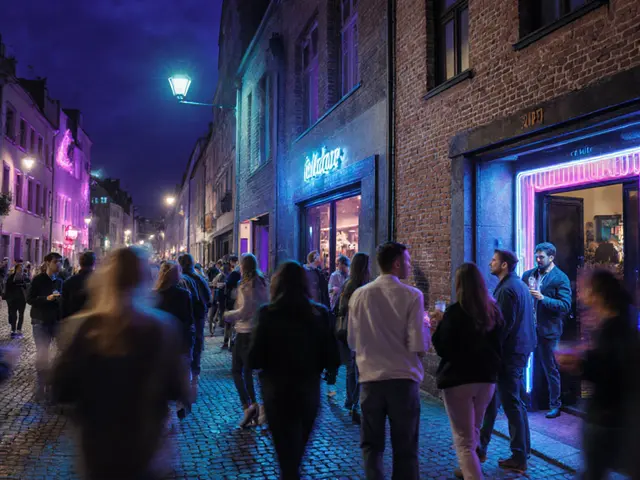Forget the days when magazines only showed one type of body. These days, curvy models are turning heads on runways, in ad campaigns, and all over social media. Why does this matter? Because it finally feels like the real world is showing up in fashion—and that means you get to see more people who actually look like you, your friends, or your family wearing clothes you might actually want to buy.
If you’ve ever felt left out when looking for style inspo, things are getting better. Brands are starting to realize that showing a wider range of body types just makes sense. People want to see how clothes fit on different shapes, not just one cookie-cutter version. You want to check if those jeans look great on thick thighs or if that cute dress hugs curves in the right spots? Curvy models make it happen.
This shift isn’t just about looks—it’s about confidence. Seeing someone with your body type killing it in a fashion campaign can do wonders for how you think about yourself. Plus, it pressures brands to keep improving their sizing, cuts, and selection. If you’re looking for inspiration, check out social media hashtags like #curvymodel or follow well-known curvy influencers. You’ll spot real styling tips and even discover new brands that fit your vibe.
- Key Points
- Direct Answer
- What Makes Curvy Models So Important?
- How to Find and Support Inclusive Brands
Key Points
Here’s what you need to know about the rise of curvy models and why this matters for everyone who likes fashion that actually fits real people.
- Major fashion brands like Savage X Fenty, ASOS, and Nike now regularly feature curvy and plus-size models in their campaigns. This is a big shift from the early 2010s, when most ads still only showed straight-size bodies.
- The average woman in the U.S. wears a size 16-18, yet curvy representation in media only started picking up steam in the past decade.
- Models like Ashley Graham, Paloma Elsesser, and Precious Lee have landed covers on Vogue, Sports Illustrated, and major beauty campaigns—proving that body diversity sells.
- Fashion search data from 2024 shows interest in "curvy model" related searches shot up by 43% compared to 2022. That means if you’re Googling for curvy inspo, you’re definitely not alone.
- Brands that adopted size-inclusive models saw up to 30% higher engagement on social media compared to brands sticking with just straight-size models.
| Year | Major Brand Campaigns with Curvy Models | Representation in Top Fashion Magazines (%) |
|---|---|---|
| 2015 | 8 | 6% |
| 2020 | 23 | 18% |
| 2024 | 46 | 38% |
Curvy model visibility is working its way into everyday life—from local ads to chain stores to influencer accounts. When you see more body types out there, shopping and dressing up just feels more welcoming, plain and simple.
Direct Answer
Curvy models are finally getting the spotlight they deserve, showing that the fashion world is moving toward true inclusivity. It's no longer just about skinny silhouettes. Now, brands like Savage X Fenty, ASOS, and Target are putting all kinds of bodies front and center, including curvy and plus-size models in their big campaigns. The latest data from the Fashion Spot shows that in 2024, over 17% of models used during Fashion Week were considered plus-size—a record high for the industry.
What’s behind the shift? People want to see realistic representation, and brands are responding. “When you cast models that reflect your customers, you make your brand stronger,” explained designer Christian Siriano in an interview quoted by Elle Magazine:
"Fashion should always make people feel confident no matter their size. We’re finally seeing more designers get that."
The visibility of curvy models isn't just feel-good talk—it’s affecting sales, too. In 2023, a study by Plunkett Research reported that the plus-size fashion market in the U.S. was worth $24 billion, and it’s growing way faster than the overall apparel sector. Curvy models help customers picture themselves in the clothes, making online shopping easier and returns less likely.
| Year | Curvy/Plus-Size Models at Fashion Week (%) | Estimated Plus-Size Apparel Market ($B) |
|---|---|---|
| 2022 | 12% | 20 |
| 2023 | 15% | 22 |
| 2024 | 17% | 24 |
If you’re looking for style inspiration or shopping tips, start by following popular curvy influencers on Instagram or TikTok. You’ll see honest reviews, fit advice, and outfit ideas that actually work for real bodies. Want to shop smart? Look up brands with extended size ranges or check their online catalogs for photos showing the clothes on different body types before you buy.

What Makes Curvy Models So Important?
You know how weird it feels when every ad, magazine, or runway shows the same super-thin bodies? That’s why featuring curvy models hits different—finally, people are seeing bodies that actually look like them. This shift matters for a bunch of reasons, and it’s changing more than just what we see on billboards.
First up, it’s about representation. When curvy models land big campaigns—think Ashley Graham on the cover of Sports Illustrated or Paloma Elsesser walking for Fendi—it sends a message that all bodies are normal, not just size 2. It sounds simple, but seeing a wider range of sizes makes a legit difference in how people relate to fashion and themselves.
Body positivity isn’t just a vibe—it’s a real movement. 60% of American women wear a size 14 or above, according to a 2024 NPD Group market study. Yet for years, mainstream fashion ignored these shoppers. By putting diverse models front and center, brands are catching up to reality, and that trickles down to how everyone shops and feels about their own bodies. You get more options, more sizing, and less pressure to squeeze into what’s “trendy.”
But that’s not all. When fashion shows include larger bodies, it actually drives sales. Torrid, a plus-size retailer, reported a 13% increase in revenue after highlighting more plus-size models in their ads. Customers are more likely to buy when they can actually picture themselves in the clothes.
- More realistic body standards for young people
- Greater demand for inclusive sizing and better fit
- Boosts confidence for people who rarely saw themselves in media before
Want to see the impact broken down? Check out this quick table with some eye-opening stats from 2024:
| Fact | Details |
|---|---|
| Avg. US woman's size | 16-18 (CDC data) |
| Models on NY Fashion Week runways | 22% were plus-size in 2024 (The Fashion Spot) |
| Consumer interest | 67% want more curvy models in ads (Insider Survey) |
| Impact on brand loyalty | 72% say inclusivity makes them trust a brand more (McKinsey report) |
Seeing curvy models every day isn’t just about feeling included—it changes real business and real lives. When more shapes and sizes are upfront, fashion gets more honest and way more interesting for everyone.
How to Find and Support Inclusive Brands
If you want to shop brands that truly celebrate all sizes, you’ve got more options than ever. The fashion world finally woke up to the fact that real customers want to see themselves represented. Here's how to zero in on brands that walk the talk with curvy models and real body diversity.
First, keep an eye on brands that actually use models of different shapes and sizes in their main ads, not just in a tucked-away link or separate section. Brands like Savage X Fenty, Aerie, and ASOS Curve stand out because they consistently show curvy and plus-size talent right alongside straight-size models. Nike, Old Navy, and Target also stepped up by using a full range of body types in their campaigns—even on their websites you can spin through images of the same outfit on several different-sized bodies. That’s a good litmus test: if a brand only shows size-two models for all their clothes, they probably aren’t as inclusive as they claim.
When browsing online shops, filter by “plus” or “curve” sections, but don’t stop there. Check Instagram and TikTok for branded tags or influencer try-ons. Hashtags like #curvyfashion, #plussizebrands, or #inclusivefashion will lead you to real people reviewing fits and quality. The comments section is gold for honest feedback and advice on sizing too. If you notice people saying the sizing runs tiny or a brand’s curvy line feels like an afterthought, that’s a red flag.
Want to support these inclusive brands even more? Here’s where it counts:
- Leave reviews with photos—your feedback helps others find the right fit and shows brands that diversity matters to shoppers.
- Follow and share social posts from brands and influencers who spotlight inclusivity. Engagement drives visibility and change.
- Speak up if you notice a brand backtracking or lacking diversity. A quick comment or email really can get noticed—most brands track this stuff closely.
- Sign up for newsletters from brands that feel authentic. They often highlight new curvy-friendly lines or offer special discounts to loyal fans.
When you put your money and attention behind brands doing the right thing, it pushes the whole industry to be better. The more we show up and support real inclusivity, the more options everyone gets—no matter their size or shape.





